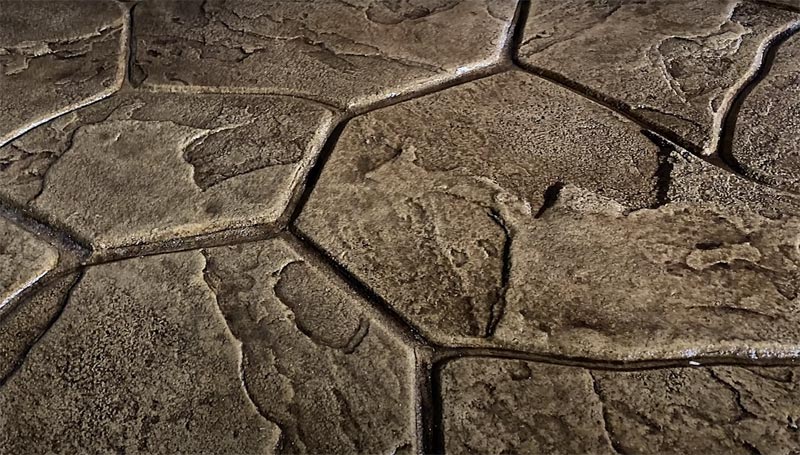Outdoor concrete floors: a simple and effective solution
More and more Italians are trying to customize their home in a way that fully reflects their tastes. This applies not only to the interiors of the houses, but also to the exteriors, such as gardens, or patios. Particularly for these types of exteriors, new trends and new trends are being proposed as regards the choice of flooring, no longer limited to the installation of standard tiles, but the use of new solutions such as resins or concrete.
Outdoor concrete floors offer a set of solutions to better customize the exteriors of your home, using materials and processes that can offer a long-lastingand at the same time economic result.
Initially designed for industrial or commercial structures, concrete floors have also proved to be very interesting for use in civil construction, where some characteristics such as resistance to foot traffic or atmospheric agents may not be so stringent, but they are certainly useful.
Outdoor concrete floors can be made up of tiles of various sizes, or of continuous concrete casts, depending on your needs: we always recommend that you understand with a professional what solutions are suitable for your needs, and therefore understand how to find the way to create your home in the best possible way.
The types of outdoor concrete flooring
Not all concrete floors are the same: thanks to the spread of this trend, more and more companies are trying to innovate and present new processes, or new uses of concrete together with other materials, to obtain unique solutions.
So let's see the main possible types of outdoor concrete floors:
- concrete and quartz floor
- concrete and marble floor
- stamped concrete floor
- concrete and gravel floor
Concrete and quartz floor
The concrete and quartz outdoor floor is certainly an interesting solution: a dusting of quartz, or quartz paste, is added to the concrete to ensure greater abrasion resistance simply and economically: pure quartz is not added as it would be impossible. to work.
The difference between the two methods of addition, that is the quartz dusting or the quartz paste, is given by the fact that in the first case the quartz and silica sand will be added superficially, and then processed and smoothed with specific machines (called trowels), which will make the surface smooth, in the second case (quartz paste) the layer containing the quartz will be much thicker, reaching about 6 or 7 millimeters thick.
For both types, it is possible to add colored pigments that allow giving a different tone from the usual concrete gray, but that allows us to have a colored outdoor floor.
Concrete and marble floor
As with concrete and quartz floors, concrete and marble grit floors are also made by combining the two materials, when the first is still not completely dry so by drying the marble it is fully integrated into the floor. Using a dusting of marble grit, on the surface, this particular type of concrete floor is more resistant to wear, frost, and the passage of time.
This element must be evaluated very carefully in the various types of casting processes, especially in northern states, where temperatures can drop below zero in winter, there may be problems over the years with the cement, which may present unsightly imperfections (however settable by contacting professionals).
Finally, the concrete and marble grit floors are very resistant to infiltration of liquids and can be sanded and customized with a large variety of colors.
Stamped concrete floor
As the name itself implies, the printed concrete outdoor floor is in effect simply a layer of concrete, which can be spread on the ground, or possibly on a substrate and on which, before complete drying, it is imprinted, with molds that will then be removed, a particular design of your choice.
The design chosen for the printed floor can be of a geometric and abstract type or reproduce the features of various other types of materials, such as brick, stone, wood, or others.

As with the concrete and quartz floor, and the concrete and marble floor, it is also possible to add particular pigments to the mixture to obtain the desired color, thus allowing complete customization and a final effect that is unique in the world.
The great advantage of this type of flooring, compared to the realization of the same theme with the original materials, is given by the fact that also in this case we will have a single cast of concrete: if for example, we wanted to create a path of red bricks, we could also evaluate to make a concrete cast colored red, and imprint the contours of the bricks on it, obtaining an advantage in terms of costs, but also the fact of avoiding in the future having weeds or other that grow between one brick and another.
Concrete and gravel outdoor flooring
Concrete and gravel floors, also known as “washed gravel”, are another very valid option in terms of duration, cost, and resistance. They overcome the typical problems of traditional "seeded gravel" flooring (the classic gravel paths), where continuous maintenance is required to eliminate weeds or to fix or rake the pebbles that tend to break down easily, creating annoying depressions caused by the passage of pedestrians or cars.
The washed gravel is obtained by mixing cement, fine marble grit, river stones, or natural stone and a special colored fiber-reinforced mixture, with the addition of further additives to make the casting even more resistant.
This solution combines practicality, safety, and resistance to atmospheric agents and anti-slip properties, the naturalness of gravel to the simplicity and practicality of concrete, with the possibility of creating the most varied configurations, types, and combinations of colors and customizations.